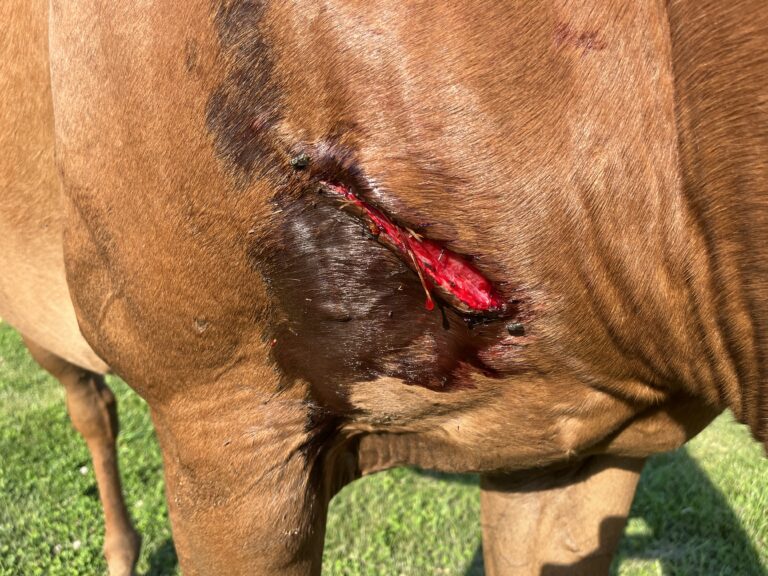If your horse has a stone bruise, is prone to sore feet, or has just jumped on hard ground, you should consider packing his feet for the night to improve his comfort.
It’s good to know how to check your horse’s hoof pulse. There is a large vein that runs down the inside of the horse’s fetlock; it normally has a weak pulse, being so far from the heart and low on the body. When a horse has been standing quietly but has a throbbing, fast pulse, it can indicate there is a problem brewing in the hoof, so wrapping the horse’s feet is a good idea.
1. To find the pulse, glide your fingers slowly around the back of the fetlock. You will feel a slight depression in the joint directly above the inside bulb of the heel. When the pulse is strong and throbbing, you probably have a problem. When it’s weak or hard to find, it’s most likely the hoof is okay.
2. The most basic form of hoof packing consists of Epsom salts and povidone-iodine solution.
3. First, you need to make your duct-tape “bootie.” Place about 8 inches of duct tape across your leg.
4. Make a duct-tape square with approximately six strips of tape.
5. Repeat the process, but go in the opposite direction—this helps to strengthen the bootie.
6 A & B. Mix the Epsom salts and the povidone-iodine solution together until they have the consistency of wet sand.
7 A & B. Pack into the foot.
8 A & B. Apply a disposable diaper.
9 A. Beginning at the toe, wrap veterinary wrap around the hoof and toward the bulbs of the heel.
9 B. Wrong: When going over the bulbs of the heel, do not pull too tight.
9 C. Instead, pull only enough to snug the wrap as you pass over the soft tissue.
9 D. Each time you come around, angle over the bulbs to create a “V” at the back of the heel.
10 A-C. Finally, apply your pre-made duct-tape bootie.
11. A leg poulticed and foot packed for the night.





Commercially marketed products such as Absorbine’s Magic Cushion are simple to use and work quite well. With this product, use a latex glove to pack the foot, then apply veterinary wrap and a duct-tape bootie. Note: The diaper will absorb the healing ingredients of this product, so you should skip that step when using Magic Cushion.
PRO TIP: When using Absorbine’s Magic Cushion, apply a layer of petroleum jelly to the bulbs of the heels and the lower pastern to prevent the skin from getting irritated if the product seeps out of the wrap.
Adapted with permission from “World-Class Grooming for Horses” by Cat Hill and Emma Ford, published by Trafalgar Square Books (www.horseandriderbooks.com) and available through www.EquineNetworkStore.com.











